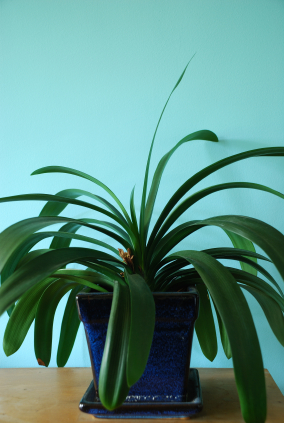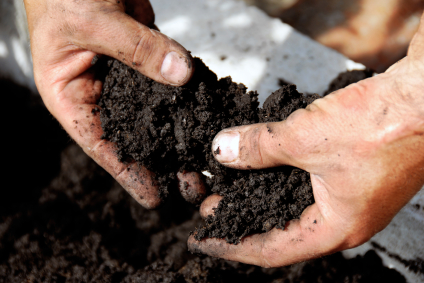An Introduction to Fosterella
Author: Melanie Dearringer1 Comment
Care and Culture, Classification
Fosterella is a relatively new genus of bromeliad. It was established in 1960 by L.B. Smith. It is one of the sixteen genera of bromeliads found in the sub-family called Pitcairnioideae. Many of the species now classified in the Fosterella genus were classified in other genera at one time. Fosterella is a small genus with only 31 species. However, new species are still being discovered and classified. The most recent extensive work on the species was done in Germany in 2009 by Jules Peters who made Fosterella the focus of her doctorate work.
Mulford Foster

-Fosterella
Fosterella is named for Mulford Foster, one of the most significant people in bromeliad collection and hybridization. Foster was a naturalist, artist, landscape designer and horticulturist who contributed immeasurably to the bromeliad enthusiast community. It is estimated that Foster found and collected between 170 and 200 new species of bromeliad from South America. He also hybridized numerous new cultivars, many of which also bear his name. Through his writing and teaching Foster was incredibly instrumental in popularizing bromeliads as both houseplants and landscaping plants in the United States.
Range
Fosterella are found primarily within the arid to semi-humid lowlands and foothills of the Andes in South America. Peru, Bolivia, and Argentina are the primary countries where they are found. A few exist in Brazil as well. There is one exception found outside of South America in southern Mexico. These plants are all terrestrial and live primarily on open forest floors.
Appearance
Few Fosterella are exceptionally beautiful compared to other more popular species of bromeliad. Therefore, there are not many in cultivation for hobbyists and landscapers to collect. However, Fosterella produce pups generously and are easy to care for, making them ideal for quickly filling hanging baskets or containers.
Many Fosterella are characterized by their broad flat leaves. They are often discolor, meaning they have one color on the top of the leaf and different color on the bottom. Fosterella leaves are usually bright green on the top side and purple or burgundy on the bottom side. Fosterella flowers grow on a stalk that rises above the plant. Some Fosterella flower stalks grow quite tall. The flowers are usually white or yellow, and occasionally pink. They are typically small and bell shaped, hanging down from the stalk.
Soil

-Fosterella needs rich soil to thrive.
Fosterella require soil that is rich in organic material, yet well draining. Unlike other bromeliads that are epiphytes, Fosterella takes its nutrients and water from roots in the soil. As a result the plants require a nutrient rich potting medium. However, Fosterella also require good drainage. Like many other bromeliads they can be prone to rot if they sit in water. Be sure to mix perlite or bark into the potting medium, so that the soil does not become too dense. You do not want it to stay soggy. Also, make sure your container provides adequate drainage. Place a few rocks at the bottom of the container to so that it will drain easily.
Light and Water
Most Fosterella can handle a fair amount of sun with some shade. Full sun will likely damage the plants. Dappled shade is ideal. Because of their adaptation to arid or semi-arid climates, Fosterella do not require much water. Water more frequently in the spring and summer and rarely in the winter. Watering every other week in the winter and once a week during the growing season, depending on how fast your container dries, should be enough for a Fosterella. Fosterella also do not require as much humidity as many other species of bromeliad. This makes them easier to raise in drier climates.
Propagation
Like many bromeliads Fosterella will produce offshoots called pups. These pups can be removed and planted in new containers. A four inch container should provide enough space. The pup may be a bit top heavy until its roots mature. Gently stake the plant until it can stay up on its own. Wait to remove the pup from the mother plant until it is at least a third of the size of the original plant. The larger the pup is when removed, the better start it will have. You can also allow clumps of pups to remain attached to the mother plant to form a clump in the container.
While Fosterella may be difficult to find at conventional garden centers and nurseries that carry bromeliads, there are several species that are popular among collectors. Some of these species are available from specialty bromeliad retailers. The following are descriptions of more commonly grown Fosterella:
Fosterella villosula
Fosterella villosula is available from online specialty bromeliad plant retailer Tropiflora. This plant has bright green leaves with deep purple undersides. It produces a tall flower spike with small, white, bell shaped flowers. It requires partial shade, little water and prefers higher temperatures.
Fosterella spectabilis
This plant is also available from Tropiflora. It is unique to the Fosterella genus in that it has beautiful pink flowers. The stalk is somewhat pendant and the delicate flowers hang down from the pink inflorescence. It has broad, flat, bright green leaves that splay out to create a sort of flat rosette. Fosterella spectabilis grows up to a foot tall and two feet wide.
Fosterella elata
Fosterella elata produce broad, flat, dark green leaves that curve downward to create a beautiful rosette. The leaves are somewhat wavy at the margins providing rich texture. The flower stalk rises up to four feet from the middle of the rosette. It has burgundy inflorescence and delicate white flowers.
Fosterella latifolia
This plant produces very few leaves. The leaves are narrow and distinctly wavy around the entire margin. The tops of the leaves are green with dusty purple undersides. The plant produces a tall and slender flower spike with dainty bell shaped flowers.
Fosterella weddelliana
This plant has leaves that are very slender and stand erect to form a tight upright rosette. The leaves are a dusty, dark green, becoming deep purple at the base of the plant. Fosterella weddelliana is also covered with a fine silvery hair that is most apparent at the base of the plant.
Add Fosterella to Your Collection
If you are a bromeliad collector, Fosterella can add a distinctive glimpse into and area of South America less commonly represented by bromeliads. Fosterella are certainly unique and would be an excellent addition to any collection. Fosterella are also ideal to care for. They require little water and partial shade. With a little attention they will produce flowers and pup generously creating full arrangements. You can expand the depth of your bromeliad collection by growing Fosterella.
Sources
“A Word about Fosterella’s.” Succulent Bromeliads and Others. <http://succulentbromeliad.blogspot.com/2010/01/word-about-fosterellas.html?q=Fosterella>
“Bromeliad Photo Index.” Florida Council of Bromeliad Societies. <http://www.fcbs.org/pictures.htm>
Butcher, Derek. “Fosterella in Australia.” <http://www.bromeliad.org.au/news/DD1209c.htm>
“Fosterella Elata.” Succulent Bromeliads and Others. <http://succulentbromeliad.blogspot.com/2010/02/fosterella-elata.html>
Mahoney, Jessica. “How to Germinate Fosterella” SFGate. <http://homeguides.sfgate.com/germinate-fosterella-22693.html>
“Mulford B. Foster.” Wikipedia. <http://en.wikipedia.org/wiki/Mulford_B._Foster>
Tropiflora. <http://www.tropiflora.com/shop.cfm?page=display&ProductID=51504&CategoryID=46&Genus=Fosterella&iPageNbr=1&src=genus>
One response on “An Introduction to Fosterella”
Leave a Reply

Resource Download
Hechtia Care Cheat Sheet
Learn how to care for your Hechtia bromeliad with this quick and easy informational guide.
Learn More
Ask an Expert
Questions about bromeliads?
Our experts love a challenge!
Photo of the Week
Submit your photo to be featured on the blog!
More Photo of the Week Winners
Submit Photo








what is the pup